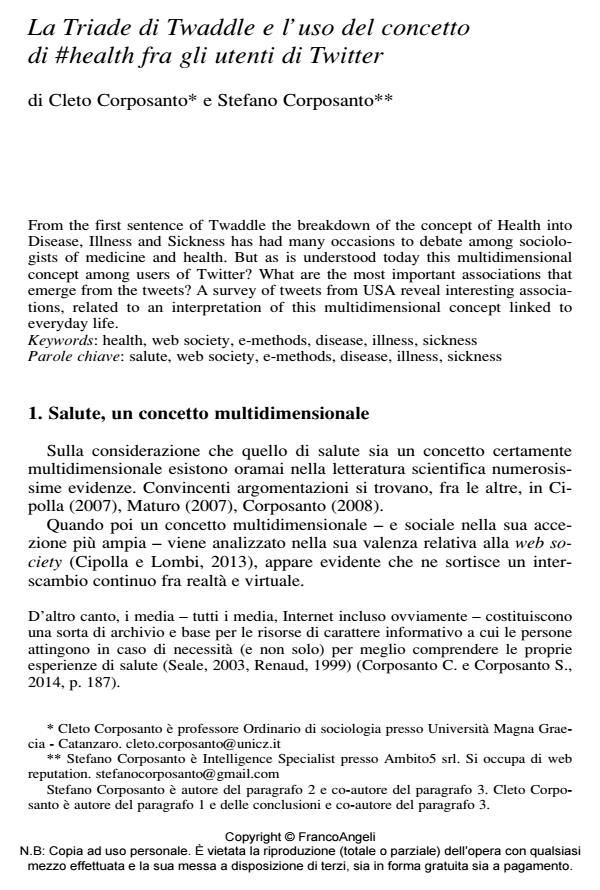La Triade di Twaddle e l’uso del concetto di #health fra gli utenti di Twitter
Journal title SALUTE E SOCIETÀ
Author/s Cleto Corposanto, Stefano Corposanto
Publishing Year 2014 Issue 2014/3
Language Italian Pages 17 P. 118-134 File size 939 KB
DOI 10.3280/SES2014-003009
DOI is like a bar code for intellectual property: to have more infomation
click here
Below, you can see the article first page
If you want to buy this article in PDF format, you can do it, following the instructions to buy download credits

FrancoAngeli is member of Publishers International Linking Association, Inc (PILA), a not-for-profit association which run the CrossRef service enabling links to and from online scholarly content.
From the first sentence of Twaddle the breakdown of the concept of Health into Disease, Illness and Sickness has had many occasions to debate among sociologists of medicine and health. But as is understood today this multidimensional concept among users of Twitter? What are the most important associations that emerge from the tweets? A survey of tweets from USA reveal interesting associations, related to an interpretation of this multidimensional concept linked to everyday life.
Keywords: Health, web society, e-methods, disease, illness, sickness
- Alzheimer's: the story of a disease without illness Veronica Moretti, in SALUTE E SOCIETÀ 1/2019 pp.134
DOI: 10.3280/SES2019-001009
Cleto Corposanto, Stefano Corposanto, La Triade di Twaddle e l’uso del concetto di #health fra gli utenti di Twitter in "SALUTE E SOCIETÀ" 3/2014, pp 118-134, DOI: 10.3280/SES2014-003009